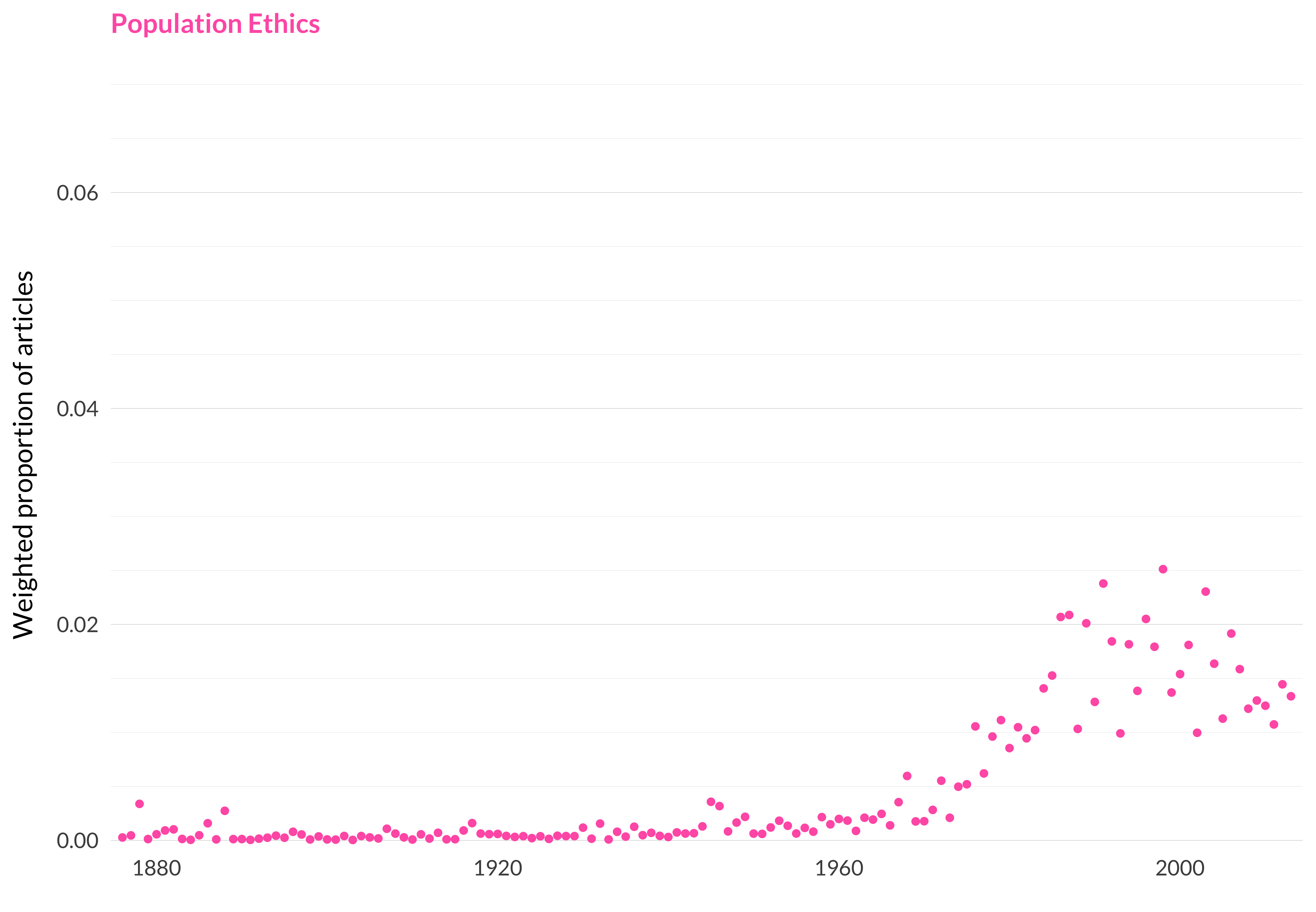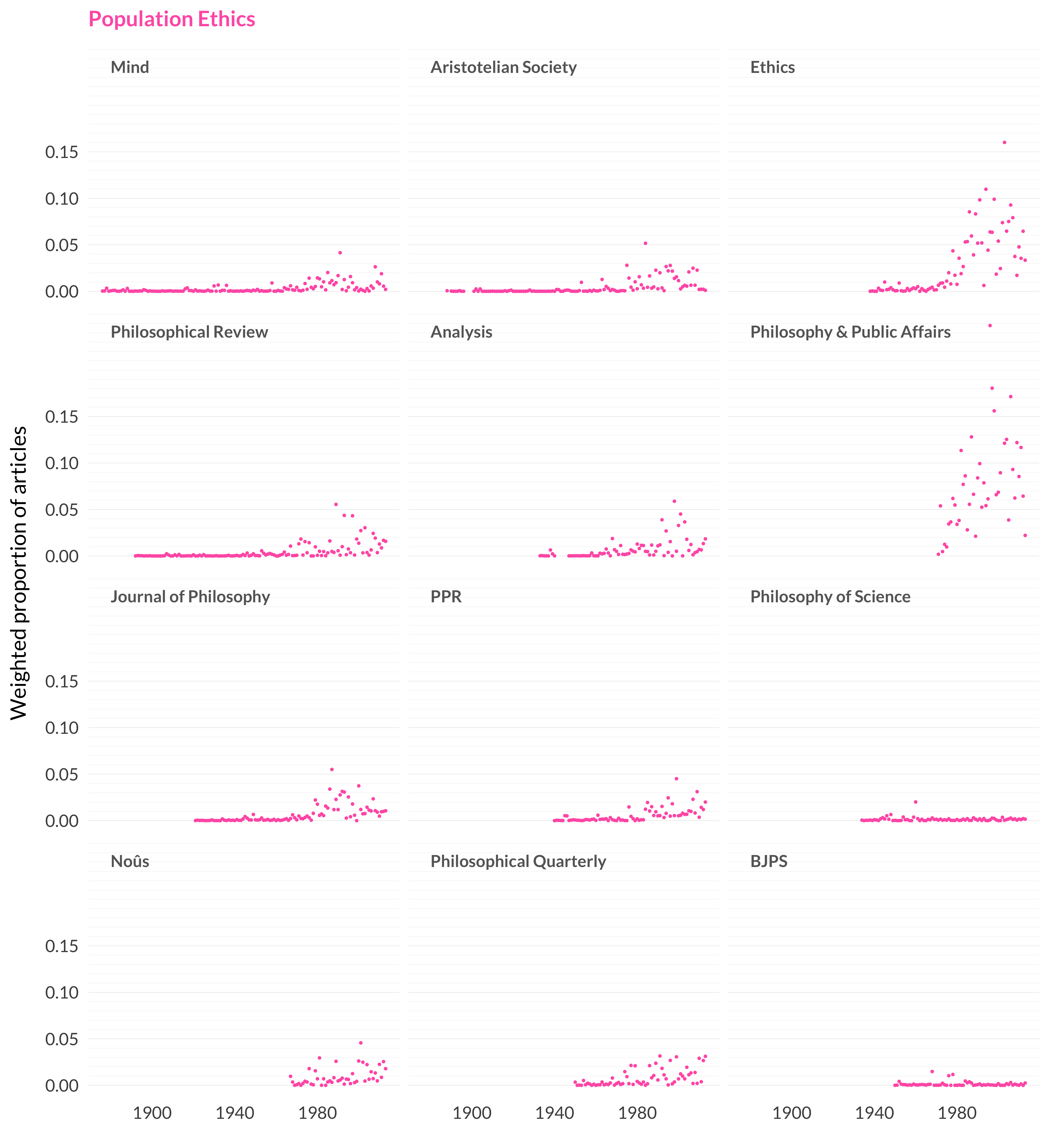2.83 Population Ethics
Category: Ethics
Keywords: consequentialism, consequentialist, projects, worse, scanlon, lives, restrictions, parfit, aid, overall, benefit, williams, promote, cost, nagel
Number of Articles: 291
Percentage of Total: 0.9%
Rank: 55th
Weighted Number of Articles: 250.3
Percentage of Total: 0.8%
Rank: 68th
Mean Publication Year: 1993.7
Weighted Mean Publication Year: 1991.8
Median Publication Year: 1995
Modal Publication Year: 2003
Topic with Most Overlap: Ordinary Language (0.0552)
Topic this Overlaps Most With: Abortion and Self-Defence (0.0325)
Topic with Least Overlap: Psychology (9e-05)
Topic this Overlaps Least With: Psychology (0.00017)

Figure 2.190: Population ethics.

Figure 2.191: Population ethics articles in each journal.
Comments
I’ve called this population ethics, but it’s really contemporary utilitarianism. For various reasons the term consequentialism became more popular over this time period, and the model doesn’t really know that this is a near synonym for ‘utilitarianism’, so it puts the consequentialist articles and the utilitarian articles in separate categories. I didn’t feel like naming the topic after what is something of a terminological change. I could have called it numbers and ethics, which would have been accurate enough if a little frivolous. Instead, I focused on Parfit’s centrality to the topic and called it population ethics.
It’s mildly surprising to me that “Famine, Affluence and Morality” is in here. Of course, it is a consequentialist article. But most of this topic lives at a much higher level of abstraction. Partially what happened was that the model I’m using didn’t really settle on a single applied ethics topics. Other runs of the model had topics where “Famine, Affluence and Morality” and “A Defense of Abortion” as twin pillars of a big applied ethics topic. But here they got split, and so Singer’s paper ends up with quite a bit of high theory around it.
And I know I’m being repetitive on this, but it’s just shocking to me to see how little of this work is turning up in the “generalist” journals. The left-two columns in the graph suggest this was an incredibly niche, minor part of contemporary philosophy, with perhaps a small bubble of interest in the 1990s and early 2000s that had faded. And that would be completely the wrong picture. That’s why I felt it was essential to include the “specialist” journals in this study; it’s not possible to get an accurate picture of the discipline without them.